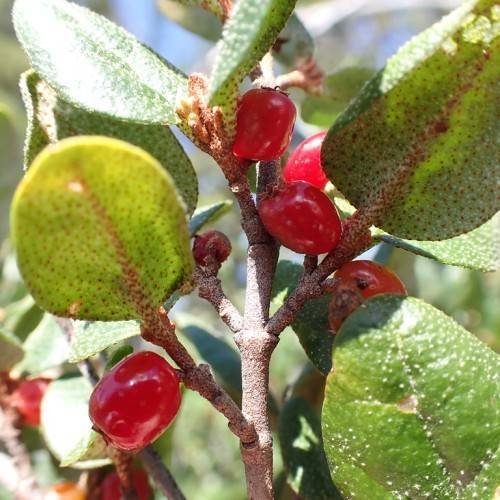
Canadian Buffaloberry
Shepherdia canadensis
Also Known As - soapberryCycle:
Perennial
Watering:
Minimum
Hardiness Zone:
2
Flowers:
Flowers In Spring
Sun:
Full sun, Part sun/part shade
Soil:
Sandy,Loamy,Clay,Humus,Rocky
Fruits:
Fruits In Summer Ready In Fall
Edible:
Yes
Leaf:
Yes
Growth Rate:
Moderate
Salt Tolerant:
Yes
Thorny:
Yes
Care Level:
Medium
watering
Watering: Canadian Buffaloberry plants should be watered thoroughly once every 7-10 days. Watering should be done in the morning so that the foliage has enough time to dry out before the night. Avoid getting the foliage wet when irrigating. Over-watering or soggy soil can lead to fungal diseases, so it is important to make sure the soil is well drained. When watering, it is important to saturate the soil around the plant, taking care to avoid over-watering and leaving water puddles in the soil. It is important to monitor watering needs as they can vary with planting location, soil type, and seasonal changes. It may be necessary to water more often during times of drought, or if the soil is especially dry. Additionally, mulching the soil around the plant can help retain water and minimize evaporation.
sunlight
Canadian Buffaloberry (Shepherdia canadensis) needs at least 6 hours of direct sunlight per day to thrive. The plant will benefit from morning sun, which helps dry the dew from the leaves and prevents powdery mildew, but will tolerate up to 8 hours of direct sunlight per day. The plant should be kept out of the hot afternoon sun to prevent leaf scorch.
pruning
Canadian Buffaloberry plants should be pruned back to the ground once every 2 to 3 years in late winter or early spring. This species usually keeps its foliage for 2 to 3 years, so this type of pruning is necessary to prevent an overgrowth of the branches and to reduce the chances of disease. When pruning, take care to only remove the tallest branches and to leave the smaller ones intact; this will help promote bushy, thick growth. If you need to remove any diseased or damaged branches, do all of them in 1 go with sharp pruning shears or loppers. Be sure to disinfect your pruning tools between cuts to prevent the spread of disease.
